How to Brew Turkish Coffee
Turkish coffee is more than just a drink it’s a centuries-old tradition, a symbol of hospitality, and an art form in itself. But have you ever wondered what makes this coffee so unique? From its distinctive preparation method to the rich, velvety texture, brewing Turkish coffee is an experience that engages all the senses.
Unlike modern brewing techniques, Turkish coffee is slow-cooked in a special pot called a cezve, creating a bold and unfiltered cup with a signature layer of foam. The process may seem intricate, but with the right approach, anyone can master it. Whether you’re a coffee enthusiast looking to expand your skills or someone simply curious about this time-honored ritual, learning how to brew Turkish coffee opens the door to a world of rich flavors and cultural significance.
In this guide, we’ll walk you through everything you need to know from choosing the right coffee to mastering the brewing process—so you can enjoy an authentic cup right at home. Ready to elevate your coffee experience? Let’s begin!
Essential Equipment and Ingredients

To brew authentic Turkish coffee, you need a few key tools and ingredients:
- Cezve (Ibrik): A small, long-handled pot, usually made of copper or brass, specifically designed for making Turkish coffee.
- Finely Ground Coffee: Turkish coffee requires an extra-fine grind with an almost powder-like texture.
- Water: Always use cold, filtered water for the best results.
- Sugar (Optional): Turkish coffee can be prepared unsweetened or with different sugar levels.
- Serving Cups (Fincan): Traditional Turkish coffee cups are small and similar to espresso cups, and they enhance the cultural experience of serving coffee.
With these essentials, you’re ready to start brewing.
Selecting High-Quality Coffee Beans
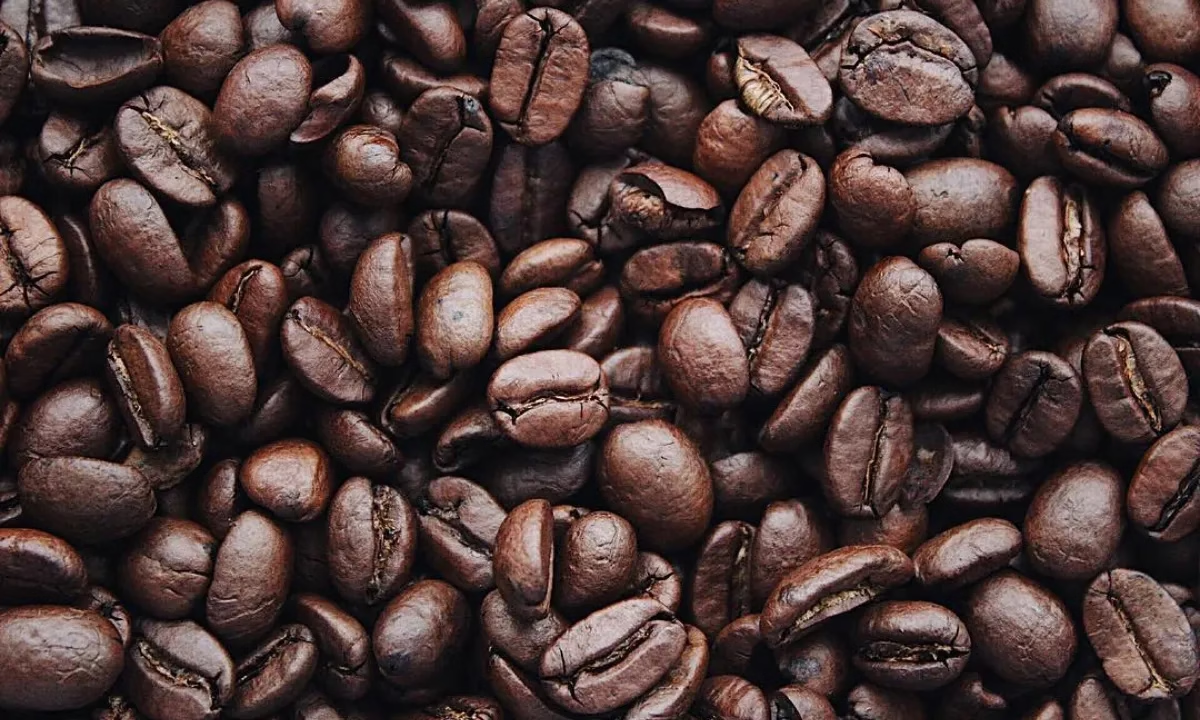
The quality of coffee beans plays a huge role in the final taste of your Turkish coffee. Generally, Arabica beans are preferred due to their smooth and rich flavor profile. However, some blends include Robusta beans for a stronger kick. When selecting beans:
- Look for fresh, high-quality beans with a medium to dark roast.
- Avoid pre-ground coffee unless it is specifically labeled as Turkish coffee.
- Opt for single-origin Arabica beans for a more refined flavor.
Freshness is key, so always buy whole beans and grind them just before brewing.
The Importance of an Extra-Fine Grind
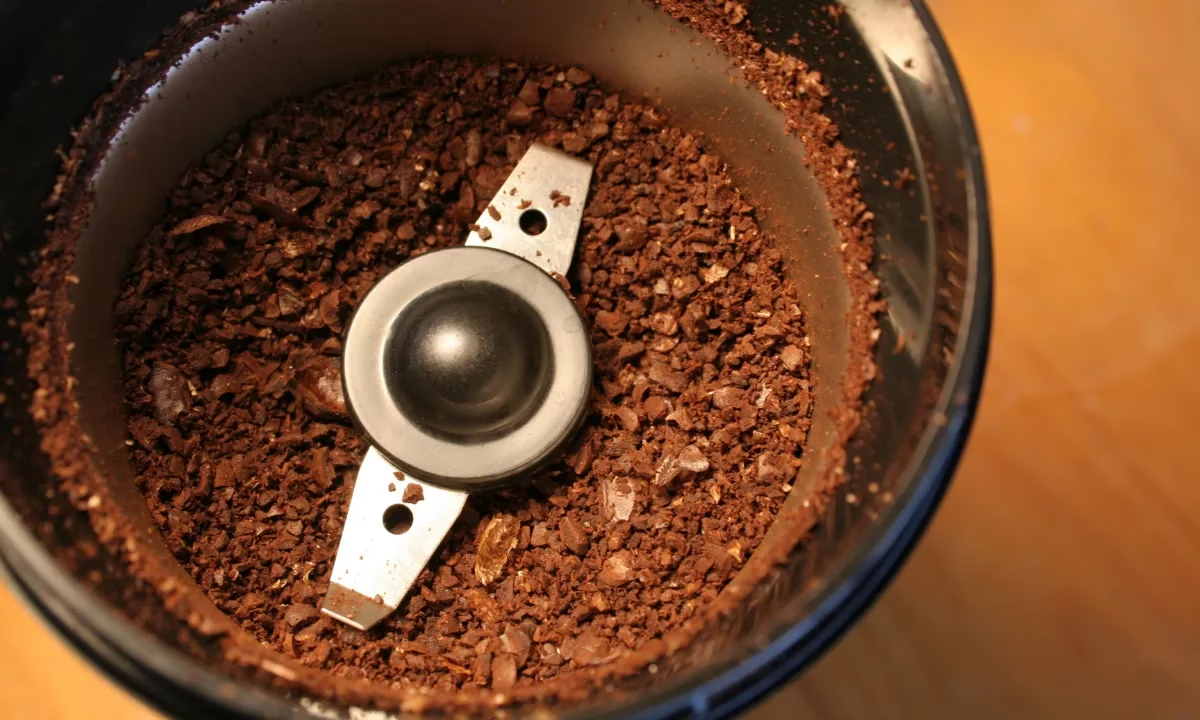
One of the defining characteristics of Turkish coffee is its ultra-fine grind. The coffee grounds should be as fine as powdered sugar or even flour. This consistency is crucial because Turkish coffee is unfiltered, meaning the grounds stay in the cup, helping to create a thick texture and rich taste.
To achieve the perfect grind:
- Use a Turkish coffee grinder or a high-quality burr grinder with a fine setting.
- Avoid blade grinders as they produce uneven grinds.
- If buying pre-ground, ensure it is specifically labeled for Turkish coffee.
- An ultra-fine grind is essential for achieving the best flavor and mouthfeel in your brew.
Where to Source Authentic Turkish Coffee
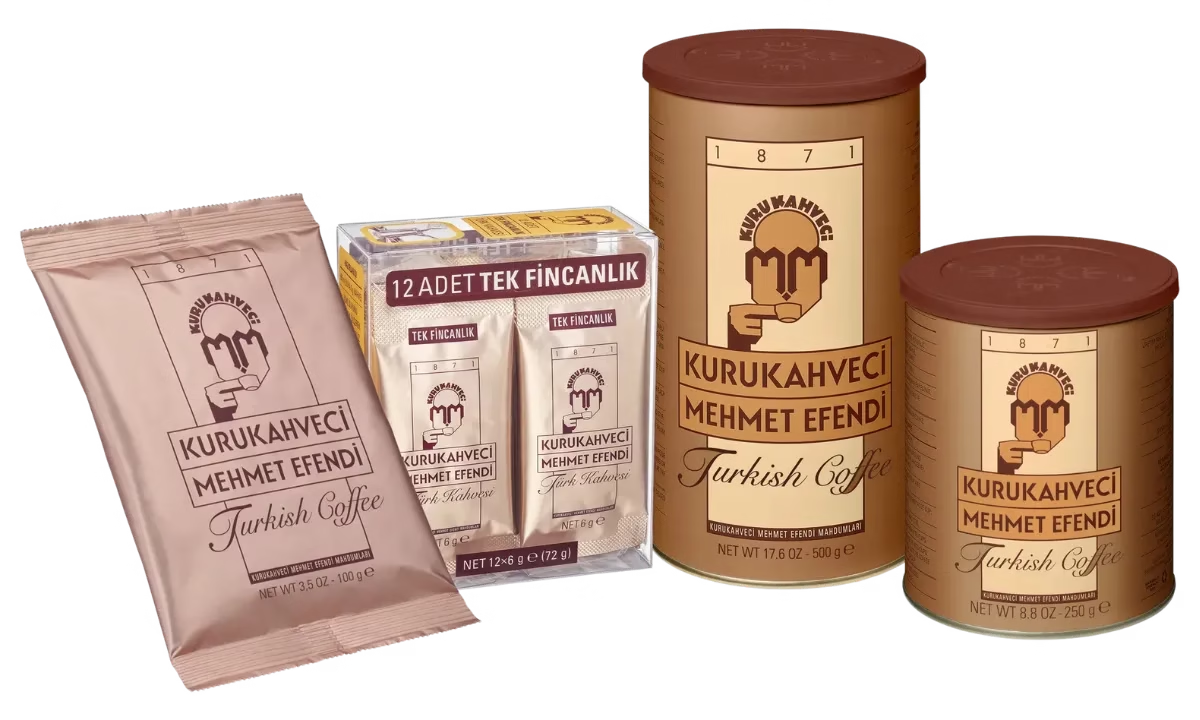
Authentic Turkish coffee can be found in various specialty stores and online retailers. Some of the best places to source high-quality Turkish coffee include:
- Local Middle Eastern or Turkish grocery stores
- Online marketplaces like Amazon, Trendyol
- Well-known brands such as Kurukahveci Mehmet Efendi, Hafiz Mustafa, and Nuri Toplar
For the best experience, try a few different brands to find the flavor profile you enjoy most.
Step-by-Step Brewing Process
I. Measuring the Coffee, Water, and Sugar
For a standard serving of Turkish coffee, follow this ratio:
- 1 heaping teaspoon of finely ground coffee per cup (about 2.5 oz of water)
- Cold filtered water for the best taste
- Sugar options: No sugar (sade), medium sweet (orta), or very sweet (şekerli)
Stir everything in the cezve before placing it on the heat.
II. Using the Traditional Copper Cezve (Ibrik)
The cezve, also called an ibrik, is designed specifically for Turkish coffee brewing. The copper or brass material ensures even heat distribution, which is crucial for a slow and controlled brewing process.
Choose a cezve that matches the number of servings you plan to make. The best cezves have a thick base and a comfortable handle for easy pouring.
III. The Art of Slow Brewing Over Low Heat
Brewing Turkish coffee is an art that requires patience. Follow these steps:
- Place the cezve over low to medium heat.
- Do not stir once it starts heating; let the foam develop naturally.
- Allow the coffee to slowly heat until a thick foam forms at the top.
- Remove from heat before it boils over.
IV. Achieving the Perfect Foam
Foam is a crucial part of Turkish coffee and is considered a sign of a well-brewed cup. To maximize foam:
- Use freshly ground coffee.
- Heat slowly without stirring too much.
- When foam starts to rise, remove it from heat and carefully pour it into each cup before finishing the brew.
V. Pouring and Serving the Right Way
Turkish coffee is served with tradition and etiquette:
- Pour slowly to keep the foam intact.
- Let the coffee sit for a minute before drinking to allow the grounds to settle.
- Serve with a glass of water and a sweet treat, such as Turkish delight.
Enhancing the Experience
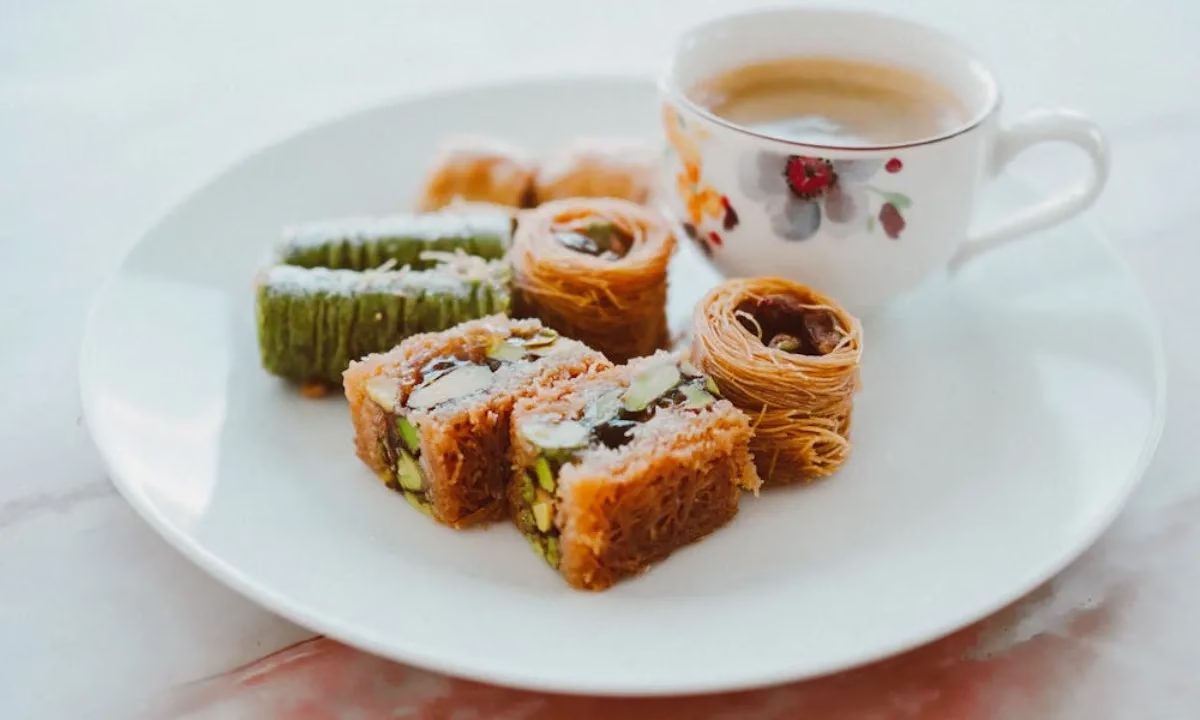
I. Traditional Sweeteners and Spices (Cardamom, Clove, etc.)
Adding spices to Turkish coffee can enhance its aroma and flavor. Cardamom is the most common spice used, giving the coffee a warm, slightly sweet note. Other spices such as clove, cinnamon, and nutmeg can also be added to create a unique twist on the traditional brew.
II. Pairing with Turkish Delights and Other Treats
Turkish coffee is often served with sweet treats that complement its rich and bold taste. Some popular pairings include:
- Turkish Delight (Lokum): A chewy, sugar-dusted confection available in various flavors.
- Baklava: A sweet, layered pastry made with nuts and honey syrup.
- Dried fruits and nuts: Almonds, walnuts, and dates enhance the coffee’s natural flavors.
III. The Ritual of Drinking and Fortune Telling
Drinking Turkish coffee is a ritual in itself. Many enjoy it slowly, savoring each sip. In Turkish tradition, the leftover coffee grounds in the cup are often used for fortune-telling, known as tasseography. The cup is turned upside down onto a saucer, and once cooled, a reader interprets the patterns left behind, offering insights into the drinker’s future.
Common Mistakes and How to Avoid Them
I. Overheating and Burning the Coffee
One of the most common mistakes is overheating the coffee, which results in a bitter and burnt taste. Turkish coffee should be brewed over low to medium heat to allow for slow extraction and proper foam development. If the coffee reaches a rolling boil, it has been overheated. To avoid this, watch closely and remove from heat just before it starts boiling.
II. Stirring at the Wrong Time
Many beginners make the mistake of stirring the coffee too much or at the wrong time. Turkish coffee should be stirred only at the beginning when mixing the coffee, water, and sugar (if used). Once the cezve is placed on heat, stirring should be avoided to ensure proper foam formation. Excessive stirring can also disturb the fine ground, leading to an unpleasant texture.
III. Using the Wrong Grind or Coffee Type
Turkish coffee requires an extra-fine grind, almost like powdered sugar. Using a coarser grind results in weak coffee with poor texture. Additionally, using the wrong type of beans—such as heavily roasted espresso blends—can impact the traditional flavor profile. Always opt for freshly ground, high-quality Arabica beans for the best results.
FAQs
1. Can I use regular coffee beans for Turkish coffee?
Yes, you can, but it’s essential to grind them to an extra-fine consistency, akin to powdered sugar, to achieve the distinctive, rich texture and flavor that defines authentic Turkish coffee.
2. Do I need a special pot to make Turkish coffee?
Indeed, using a cezve (or ibrik), a traditional pot with a long handle, is highly recommended for an authentic brewing experience. Its unique shape allows the coffee to boil gently, enhancing the flavors and aromas.
3. How do I clean my cezve after making coffee?
To clean your cezve, simply rinse it with warm water to remove residue. It’s crucial to avoid using soap, as it can seep into the porous material and alter the delightful flavor of your future brews.
4. Can I make Turkish coffee without sugar?
Absolutely! Turkish coffee can be savored unsweetened (known as sade), showcasing its natural flavors, or sweetened to your preference, with varying levels of sugar for those who enjoy a touch of sweetness.
5. Why is my Turkish coffee not foamy?
If your coffee lacks that signature frothy layer, ensure you’re brewing it over low heat and refrain from stirring after placing the cezve on the stove. Using freshly ground coffee will also help preserve that coveted foam, enhancing both the visual appeal and taste.


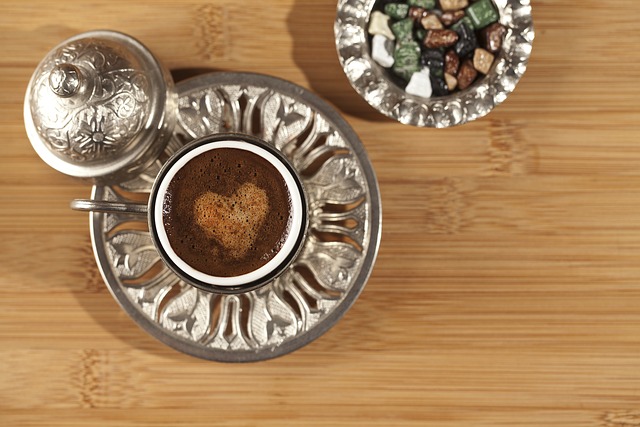
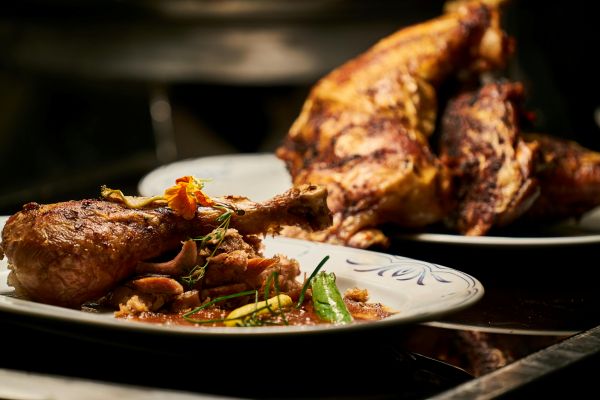




You actually make it seem so easy along with your presentation however I find this topic to be actually one thing that I feel I might never understand. It kind of feels too complicated and very large for me. I’m looking ahead for your next publish, I will attempt to get the hang of it!
Hello There. I found your blog using msn. This is a really well written article. I’ll be sure to bookmark it and return to read more of your useful information. Thanks for the post. I’ll definitely return.